Contents

The article describes the symptoms of kidney stones in women and men. The causes of their appearance and modern methods of treating the disease are given.
Kidney stones in men and women may not declare themselves for a long time. A person often learns about his disease at the first attack of renal colic. Meanwhile, urolithiasis is fraught with certain dangers and requires treatment.
The main reason for the formation of kidney stones is a metabolic disorder in the body, which leads to the formation of insoluble salts. The number of stones and their location can be very diverse.
Urolithiasis is chronic, prone to frequent relapses. Stones can be found in the bladder, in the ureters, and not just in the kidneys.
External factors can also lead to their formation, for example, when a person drinks poor-quality water or adheres to a monotonous diet for a long time. In addition, the climatic conditions in which a person lives, for example, a too hot climate, often become the cause of the development of urolithiasis. Other factors leading to the formation of stones are: the presence of ureteral stricture, taking certain medications, hyperparathyroidism, deficiency of vitamins A and D, chronic pyelonephritis and cystitis, anomalies in the development of the organs of the urinary system. In addition, one should not exclude the factor of transmission of a tendency to develop urolithiasis by inheritance.
There are several types of stones, their composition depends on what caused the deposition of salts:
In 70% of cases, calcium stones.
In 15% stones are infected.
In 12% of cases, the stones are uric acid.
In 2-3% of cases, the stones are cystine.
Why are kidney stones formed?

The reasons for the formation of kidney stones is a failure in metabolism. Water-salt imbalance and malfunctions in the chemical composition of the blood are especially dangerous. Metabolic disorders cause the development of many pathologies in the human body, including the cause of the development of urolithiasis. The salt content in the urine increases, which leads to the formation of crystals.
Various factors can contribute to a failure in metabolism, which in the future will lead to the formation of stones, among them:
Regular consumption of high salt water. The harder the water that a person drinks, the faster stones form in his kidneys. The incidence of urolithiasis is especially high in those areas where the level of hardness of tap water is exceeded. Therefore, people living in such regions must definitely use various methods to mitigate it. For this purpose, filters can be used, do not forget about folk methods of water softening. This can significantly reduce the risk of kidney stones formation.
Nutritional errors. The use of sour, salty, spicy and fried foods in excess. Spicy, fried and fatty foods increase the acidity of the urine, which leads to the formation of kidney stones. Also, you should not eat too much salt and drink large amounts of mineral water. If you exclude all harmful dishes from the diet, then you can minimize the risks of developing not only urolithiasis, but also many other diseases. Therefore, all doctors recommend adherence to proper nutrition.
Lack of fluid in the body Urine will be more concentrated the less water a person drinks. The use of a sufficient volume of liquid contributes to its dilution. In addition, the blood becomes less viscous. This will allow the body to quickly get rid of harmful substances, as well as prevent the appearance of stones. A person needs to drink as much liquid as his body requires. The generally accepted norm is 2-3 liters of water per day. However, you need to make sure that this does not negatively affect the work of other systems and organs. First of all, it concerns the heart. Therefore, it is necessary to determine the volume of water drunk per day individually.
Sedentary lifestyle. Hypodynamia is a problem of modern society. Many diseases develop from a lack of physical activity, because the blood cannot circulate normally in the body, which means that all organs suffer from a lack of oxygen and nutrients.
Bed patients are very susceptible to the development of urolithiasis. Even more dangerous is a sedentary lifestyle. Statistics show that physical inactivity increases the risk of death by 40%.
The less a person moves, the more his musculoskeletal system suffers, and the faster calcium is washed out of the bone tissue. As a result, the level of calcium in the blood rises, and the body tries unsuccessfully to excrete it in the urine. As a result, stones begin to form in the kidneys.
To prevent the development of urolithiasis, you need to lead an active lifestyle, walk more, ride a bike, refuse to use the elevator. It should be remembered – kidney stones are formed in people who move little.
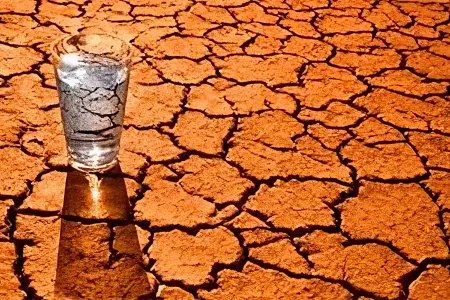
Climatic conditions. If a person lives in a hot climate, then he often suffers from dehydration, especially against the background of insufficient water intake. The concentration of salts in the urine increases, which leads to the appearance of kidney stones. At risk are those people who lived in a temperate zone, and then move to hot areas. The body does not have time to adapt, sweating increases, dehydration increases, etc.
Disorders in the work of the kidneys and urinary tract. Any injury to the kidneys leads to stagnation of urine in them. For the same reason, the narrowing of the ureter, as well as the upper urinary tract, is dangerous. In addition, the risk of infection is increased. Such violations must be detected and treated in time.
Chronic diseases of the digestive system and organs of the genitourinary system. Urinary tract infections. Such diseases of the urinary system as: pyelonephritis and cystitis are dangerous. Often, prostatitis and stomach ulcers lead to the formation of kidney stones. However, almost any infection can provoke a metabolic disorder, so any inflammatory process must be eliminated as soon as possible. Maintaining a healthy lifestyle is a guarantee that most diseases will bypass a person. It is no secret that the disruption of one system leads to disruption of the body as a whole. This is how, step by step, a wide variety of diseases develop.
Bone disease, trauma. In terms of the formation of kidney stones, diseases such as osteomyelitis, osteoporosis and other diseases of the skeletal system are dangerous. Therefore, it is so important to maintain the health of the musculoskeletal system.
Hereditary predisposition to the development of the disease EIf close relatives have suffered from kidney stones, the risk of developing this disease is increased. However, it is possible and necessary to fight the hereditary predisposition to stone formation. A healthy lifestyle and proper nutrition come to the rescue.
Vitamin deficiency, vitamin overabundance. Kidney stones form when the body has high levels of vitamin C. Dangerous deficiency of vitamin D and vitamin A.
Lack of UV. If a person is rarely in the sun, then his risk of developing urolithiasis increases.
Alcoholism, excessive use of diuretics. Taking diuretics causes the body to quickly lose fluid. This leads to an increase in the concentration of urine with subsequent formation of stones. Therefore, it is so important not to deviate from the doctor’s recommendations, to observe the dosage and frequency of taking diuretic drugs, if they were prescribed. Self-medication with diuretics is unacceptable. Drinking alcohol also carries a risk in terms of the formation of kidney stones. In general, the abuse of alcohol contributes to intoxication of the body.
Taking certain medications. It is possible to form kidney stones while taking ascorbic acid, sulfonamides and other drugs that lead to a failure of metabolic processes.
What are the symptoms of kidney stones?
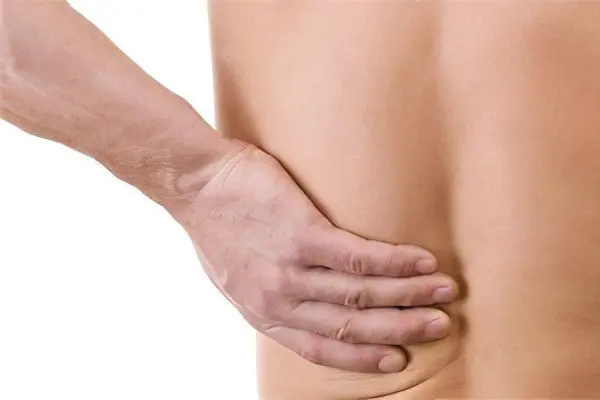
The main symptoms of kidney stones are as follows:
Pain in the kidneys. Pain is localized in the lumbar region. They can also indicate not only urolithiasis, but also a kidney infarction, an organ tumor, etc.
An attack of renal colic is characterized by pain in the abdomen that occurs on the left or right side. Pain radiates to the pubis or thigh area. Renal colic requires immediate assistance to a person.
Impurities of blood in the urine. The presence of blood in the urine (hematuria) is a severe symptom. It can indicate kidney stones, ureteral stones, pyelonephritis, kidney tumors, and other inflammatory diseases of the urinary system.
Blood in the urine can often be detected on its own. The fluid excreted by the body becomes similar to meat slop. Hematuria can develop after an injury to the bladder or kidneys, or after excessive exercise.
Sometimes urine can turn red after ingestion of certain foods containing the corresponding pigment. For example, after eating beets or pomegranates. It has nothing to do with hematuria.
Increase in body temperature. Such a sign as an increase in body temperature in itself does not indicate kidney stones. However, if the temperature increases against the background of other symptoms of urolithiasis, then it is necessary to seek medical help as soon as possible.
The appearance of edema. With kidney disease, a person always develops edema. They are especially noticeable after waking up. Swelling of the legs and arms, bags appear under the eyes. By evening they subside, and by morning they increase again. Despite this, people often do not notice or simply ignore this sign of kidney disease.
An increase in blood pressure. Arterial hypertension is a reason to undergo an examination of the entire urinary system. Very often, disorders in the functioning of the kidneys and adrenal glands lead to jumps in blood pressure.
The appearance of pain during urination. Pain during urination may indicate the presence of kidney stones, cystitis and urethritis. In this case, it is necessary to evaluate the color of the excreted urine. Normally, it is transparent, with a yellowish tint. If the color of urine changes, then this may be a sign of a disease not only of the kidneys, but also of the liver, blood or biliary tract.
Change in the volume of urine excreted. The daily volume of urine excreted is reduced to 500 ml (oliguria). This symptom may indicate glomerulonephritis. In addition, oliguria is a sign that a person is not drinking enough fluids, or he has increased sweating.
The daily volume of urine is reduced to 50 ml (anuria). A similar symptom may indicate acute renal failure, intoxication of the body with poisons or narcotic substances, and renal colic. It is not excluded the appearance of anuria when blocking the ureter with a stone.
The daily volume of urine increases to 10 liters (pollakiuria). This symptom indicates chronic kidney disease, the development of an irreversible process in the tissues of the organs. Pollakiuria is also a symptom of diabetes.
Skin changes. A change in skin color may indicate kidney disease. So, against the background of glomerulonephritis, the skin is dry, pale, with a yellowish tinge. Multiple subcutaneous hemorrhages indicate kidney disease.
Deterioration of general well-being. A person gets tired faster, his appetite worsens, weight loss occurs.
Signs of disease in other organs
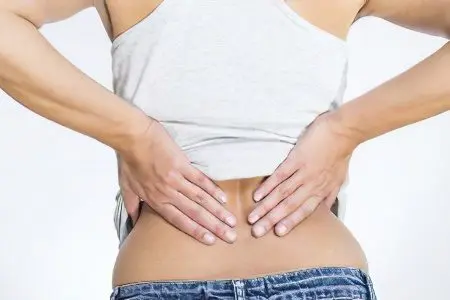
Discomfort in the lumbar region can indicate many diseases. That is why it is so important to find out the cause of the pain.
Acute appendicitis can be manifested by pain in the lumbar region. In addition, a person’s body temperature rises, nausea and vomiting may join. If you experience these symptoms, you should seek immediate medical attention.
Inflammation of the organs of the reproductive system. Lower back pain can occur during inflammatory processes in the genital organs, and the urinary system with the reproductive system has a very close relationship.
Diseases of the organs located in the abdominal cavity can respond with lumbar discomfort. To find out the nature of the pain, you need to consult a doctor for a more accurate diagnosis.
Osteochondrosis of the spinal column very often leads to pain in the lumbar region. This also includes other pathologies of the musculoskeletal system.
What can happen if you have a kidney stone?

If a person has a kidney stone, then this condition requires treatment.
When no therapy is carried out, the following complications may develop:
In the place where the stone is located, a chronic inflammatory process will occur. Especially often this happens after hypothermia, after suffering from SARS and against the background of a general decrease in immunity. As a result, diseases such as pyelonephritis, urethritis and cystitis join.
In the future, pyelonephritis can be complicated by paranephritis, the formation of purulent abscesses in the kidney or carbuncle is possible. This threatens with an abscess of the organ, the death of the renal papillae and sepsis. As a result, a person will need urgent surgical intervention, since such a condition carries a direct threat to life.
It is possible to develop renal colic, which occurs when the ureter is blocked by a stone. In addition, blockage by a kidney stone makes it impossible for urine to flow out. This can lead to an increase in the size of the kidney, to hydronephrosis, and in the future, to the development of renal failure.
Stones are able to grow. Sometimes they reach such sizes that they occupy the entire pelvicalyceal system. This, in turn, provokes the appearance of constant, unsharp pain in the lumbar region, followed by the development of progressive renal failure.
The presence of a kidney stone can provoke the development of nephrogenic hypertension, that is, the patient will have increased blood pressure, which cannot be controlled with conventional drugs.
Can a kidney stone hurt?
A kidney stone can hurt. The pains are dull in nature, they can appear when a stone blocks the ureter or pelvis of the kidney. If, against the background of pain, urine becomes cloudy, a person’s body temperature rises and general well-being worsens, then this will indicate the addition of an infection.
The pain is localized in the lumbar region, it can radiate to the back, to the left or right side, to the lower abdomen. Pain can remind of itself during the emptying of the bladder. Sometimes the pain intensifies during shaking, for example, when traveling in public transport, or after physical exertion.
Pain with kidney stones can be very slight or very intense (renal colic). Sometimes the pain does not bother a person at all, and he does not even suspect that he has a kidney stone. The first attack of pain can immediately proceed according to the type of renal colic.
Renal colic – what is it?
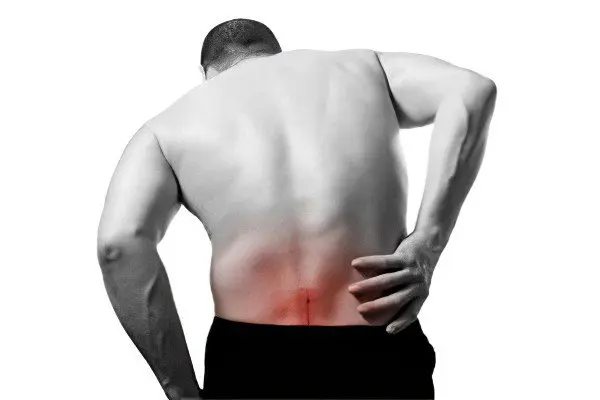
Renal colic is an acute attack of pain that occurs against the background of a sudden violation of the outflow of urine. Most often, renal colic develops when a stone is infringed in one of the sections of the ureter. The condition is accompanied by an increase in blood pressure and ischemia of the kidneys.
Renal colic is expressed in cramping pains in the lumbar region. They extend to the ureter and below. Urination also becomes extremely painful. In parallel, a person has nausea, vomiting may join. The patient is in an agitated state. Renal colic requires immediate medical attention.
Causes of renal colic. When the ureter is blocked by a stone, the pressure in the renal pelvis rises sharply, the pelvis is stretched. Since there are many pain receptors in the wall of the pelvis, the pain is usually very severe. When the size of the stone is not more than 0,5–0,6 cm, the stone can pass out by itself with urine. If the stone is large or the urinary tract is narrowed, or for other reasons the stone stays in the urinary tract for a long time, preventing urine from leaving, the pressure in the renal pelvis remains high for a long time or grows constantly, and this can lead to impaired function and even death of the kidney.
Can a kidney stone dissolve?
The kidney stone can dissolve, but this will require specific therapy in combination with diet. Only uric acid stones are reliably soluble with the help of litholytic therapy.
Oxalate and urate stones can be dissolved with an alkaline drink. Sometimes small urate stones can be dissolved by switching to an enhanced drinking regime (ordinary water is suitable for this purpose).
Can kidney stones increase blood pressure?
Kidney stones can increase blood pressure. This condition is called secondary hypertension syndrome. Most often, the pressure rises when complications of urolithiasis join, for example, chronic calculous pyelonephritis. In such patients, blood pressure is increased in 12-64% of cases. Also, blood pressure always rises against the background of an attack of renal colic.
Can kidney stones pass on their own?
Whole stones exiting the kidneys through the urethra are extremely rare. Most often they come out with urine in the form of sand. In this case, a person will experience pain that is aggravated by sudden movements, it is possible to increase urination, increase body temperature, change the composition and color of urine.
If not a grain of sand, but a stone comes out of the kidney, then the patient will have renal colic, with all the accompanying symptoms. When the stone is flattened, has an elongated shape, it can get from the kidney into the ureter and begin to move along it. However, the ureters are curved, which is a natural obstacle to the movement of even a small stone, so they often get stuck in narrow places. Sometimes stones pass through the entire ureter, but linger at the exit to the bladder, completely or partially blocking the flow of urine. Against the background of a complete violation of the passage of urine, surgical intervention is necessary.
What kind of examination should be done?
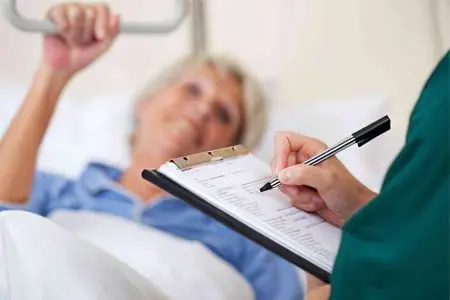
Diagnosis of kidney stones is a prerequisite that must be met before starting treatment. A qualitative examination allows you to choose the optimal therapeutic measures for a particular patient. During the diagnosis, it is very important to establish where the stones are located and what their size is.
So, to detect kidney stones, you will need:
Get an ultrasound of the kidneys and bladder. This method has its advantages. For example, when performing an x-ray examination, urate stones cannot be detected, but they are clearly visible on ultrasound.
X-ray examination can detect stones of large sizes – from 3 cm or more. The images will show oxalate stones. Urate stones are not visible to X-rays, as they simply pass them through. An X-ray examination of the kidneys is an auxiliary, and not the main method for detecting stones.
The delivery of laboratory tests allows you to identify violations of metabolic processes, as well as to draw a conclusion about the chemical composition of the stones. According to the analysis of blood and urine, one can suspect the presence of an inflammatory process in the body.
To determine the location of the stone and its exact coordinates allows excretory radiopaque urography of the kidneys. To conduct this type of study, a special substance is injected into the vein, which enters the kidneys and accumulates in them. After that, the patient is examined using an X-ray method. The danger of this type of study is reduced to the occurrence of an allergic reaction to the administered drug.
CT of the kidneys. Tomography is one of the most informative research methods that allows you to give maximum information about kidney stones.
If there are kidney stones – what to do?
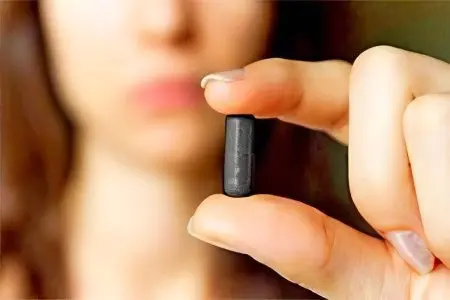
For the treatment of kidney stones, both surgical and conservative therapy is used. It is possible to determine the optimal method of getting rid of urolithiasis only together with a urologist. The tactics of managing a patient is determined based on his age, the location of the stone, the size of the stone, the symptoms of the disease, the anatomical and physical characteristics of the person. In addition, it is important to clarify whether the patient develops renal failure.
Diet selection. The food that a patient with kidney stones takes should not contribute to the formation of new stones. In addition, a person must receive enough fluid so that the daily diuresis is at least 1,5 liters. Although the diet should be varied, it is necessary to cut the total amount of food.
Depending on the composition of the stones, the following recommendations can be given:
With urate stones, you need to limit the intake of protein in the body, completely abandon the use of coffee, chocolate, spicy and fatty foods. You can not take alcohol, meat, pastes, sausage are also excluded.
With calcium oxalate stones, you need to limit the use of chocolate, milk, cheese, cottage cheese, nuts, strawberries, lettuce, sorrel, spinach. Do not drink strong tea. From fruits, all citrus fruits are banned.
If the patient has phosphate-calcium stones, then you can not eat cottage cheese, cheese, berries, pumpkin, all green vegetables, potatoes and beans. From drinks, milk and alkaline mineral water are banned.
Water strokes for flushing the kidneys. If as a result of ultrasound microliths (small crystals) were found, and not stones, then it is possible to flush the kidneys with water. To do this, a person will need to drink 0,5-1 liter of water on an empty stomach, or a decoction of dried fruits. If there are no medical prohibitions, then you can repeat this procedure once a week. This method allows you to get rid of microliths and prevent the formation of stones.
Drug treatment. If the stones move away on their own, then patients are prescribed drugs from the group of terpenes. They have a sedative, antispasmodic and bacteriostatic effect.
To dissolve cystine stones, the drug Uralit can be used. To get rid of oxalate stones – the drug Prolit. With phosphate stones, Prolit is recommended.
The most important factor influencing the course of urolithiasis is a metabolic disorder, so it must be brought back to normal. Allopurinol and Benzbromarone are taken to lower uric acid levels. It is possible to supplement these drugs with citrate mixtures. Also, patients are prescribed vitamins A and E, as powerful antioxidants that normalize the functioning of kidney cell membranes. The dose, frequency of administration and the choice of a particular drug are selected individually for each patient.
With the development of renal colic, the patient is shown taking antispasmodics (Drotaverine or Metamizole sodium), as well as thermal procedures (taking a bath, applying a heating pad). If antispasmodics are ineffective, and an attack of renal colic is delayed, it is necessary to introduce a novocaine blockade of the spermatic cord or uterine ligament.
When inflammatory processes are attached, antibiotics are indicated. It is important to understand that it will be impossible to completely get rid of pyelonephritis or other diseases provoked by urolithiasis as long as the stone remains in the kidneys.
[Video] Dr. Berg – KIDNEY STONES: How to get rid of?









